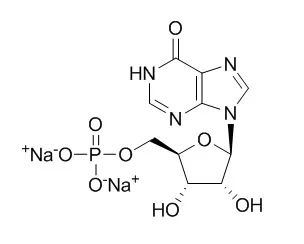| Animal Research: |
| Journal of Fishery Sciences of China, 2011,18(.5):1115-1124. | | Dandan X U , Junming C , Yanhua H , et al. Effects of dietary nucleotides on growth performance,intestinal mor-phology and anti-oxidative activities of juvenile Litopenaeus vannamei.[Reference: WebLink] | There has been extensive research into the role of nucleotides and their related metabolic products in aquatic feeds.Nucleotides and metabolites play key roles in many biological processes and are considered condi-tionally essential nutrients.During periods of rapid growth or certain disease states,dietary nucleotides may spare the cost of de novo nucleotides synthesis and optimize the function of rapidly dividing tissues,such as those in the gastrointestinal and immune systems.Research on dietary nucleotides in aquatic animals has illustrated that they may improve diet palatability,enhance growth in early stages of development,and maintain intestinal and liver health,as well as increase immunity and disease resistance.Despite their apparent importance,little is known about the benefits of supplementary nucleotides in Litopenaeus vannamei.
METHODS AND RESULTS:
We evaluated the effects of dietary nu-cleotides on growth,body composition,midgut morphology,and anti-oxidant activity in the hepatopancreas and serum in juvenile L.vannamei.We randomly assigned 960 shrimp(mean body weight: 1.01 g±0.02 g) into 8 trip-licate groups.Group G0(control) was fed a base diet and the remaining seven groups(G0.1,G0.2,G0.4,G0.6,G0.8,G1.0,and G1.2) were fed the base diet supplemented with 0.1,0.2,0.4,0.6,0.8,1.0,or 1.2 g/kg,respec-tively,of a nucleotide mixture containing adenosine-5′-monophosphate(AMP),cytidine-5′-monophosphate(CMP),uridine-5′-monophosphate disodium salt(UMP),inosine-5′-monophosphate disodium salt(5'-IMPdisodium salt),and guanosine-5′-monophosphate disodium salt(GMP)(1 : 1 : 1 : 1 : 1 w/w,mix-NT).All groups were fed their re-spective diets three times a day(8:00,15:00,and 20:00) at the same fixed rate,which ranged from 4% to 6% of body weight,for 7 weeks.Specific growth rate(SGR) and survival(SR) tended to increase as the concentration of the dietary mix-NT increased,peaking in the group supplemented with 0.6 g/kg,though the differences among the groups were not significant(P0.05).The feed conversion rate(FCR) was lower in the treatment groups than in the control group,but not significantly(P0.05).The whole body moisture content was significantly affected by the level of dietary mix-NT supplementation(P0.05),but there were no significant differences in the content of crude protein,ether extract,or ash(P0.05).The dietary mix-NT had a significant effect on the hepatosomatic index(HSI) in the group supplemented with 0.6 g/kg(P0.05).Glutamic-oxaloacetic transaminease(GOT),glu-tamic-pyruvic transaminase(GPT),and uric acid(UA) content were significantly lower in shrimp fed 0.4 g/kg mix-NT(P0.05).There was a significant increase in the midgut jejunum wall thickness in shrimp fed 0.1–0.8 g/kg mix-NT,but there no significant difference in villus height of all groups.Alkaline phosphatase(AKP) activity and total antioxidant capacity(T-AOC) in the hepatopancreas tended to increase as the level of supplementation with dietary mix-NT increased,and were significantly higher in groups G0.2 and G0.4,respectively,than in the control(P0.05).Adding mix-NT had no significant effect on serum alkaline phosphatase(AKP) and superoxide dismutase(SOD) activity(P0.05).
CONCLUSIONS:
In conclusion,supplementing the diet with a mixture of 5 nucleotides im-proves hepatopancreas function,maintains intestinal morphology,and enhances anti-oxidant activity in the hepa-topancreas of juvenile L.vannamei.It would be interesting to determine the effects of nucleotide supplementation on immune function,particularly with respect to white spot syndrome virus(WSSV). |
|






 Cell. 2018 Jan 11;172(1-2):249-261.e12. doi: 10.1016/j.cell.2017.12.019.IF=36.216(2019)
Cell. 2018 Jan 11;172(1-2):249-261.e12. doi: 10.1016/j.cell.2017.12.019.IF=36.216(2019) Cell Metab. 2020 Mar 3;31(3):534-548.e5. doi: 10.1016/j.cmet.2020.01.002.IF=22.415(2019)
Cell Metab. 2020 Mar 3;31(3):534-548.e5. doi: 10.1016/j.cmet.2020.01.002.IF=22.415(2019) Mol Cell. 2017 Nov 16;68(4):673-685.e6. doi: 10.1016/j.molcel.2017.10.022.IF=14.548(2019)
Mol Cell. 2017 Nov 16;68(4):673-685.e6. doi: 10.1016/j.molcel.2017.10.022.IF=14.548(2019)